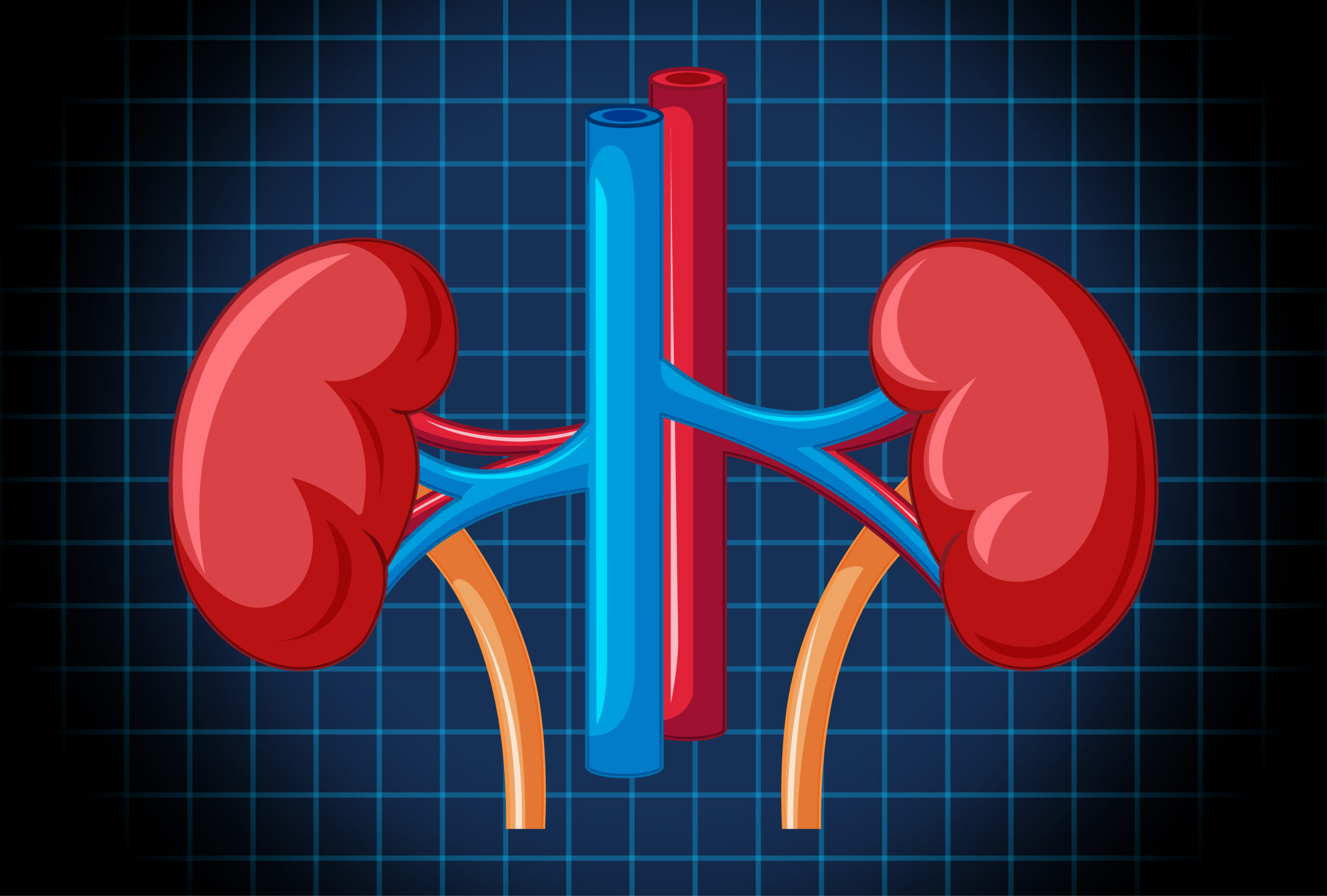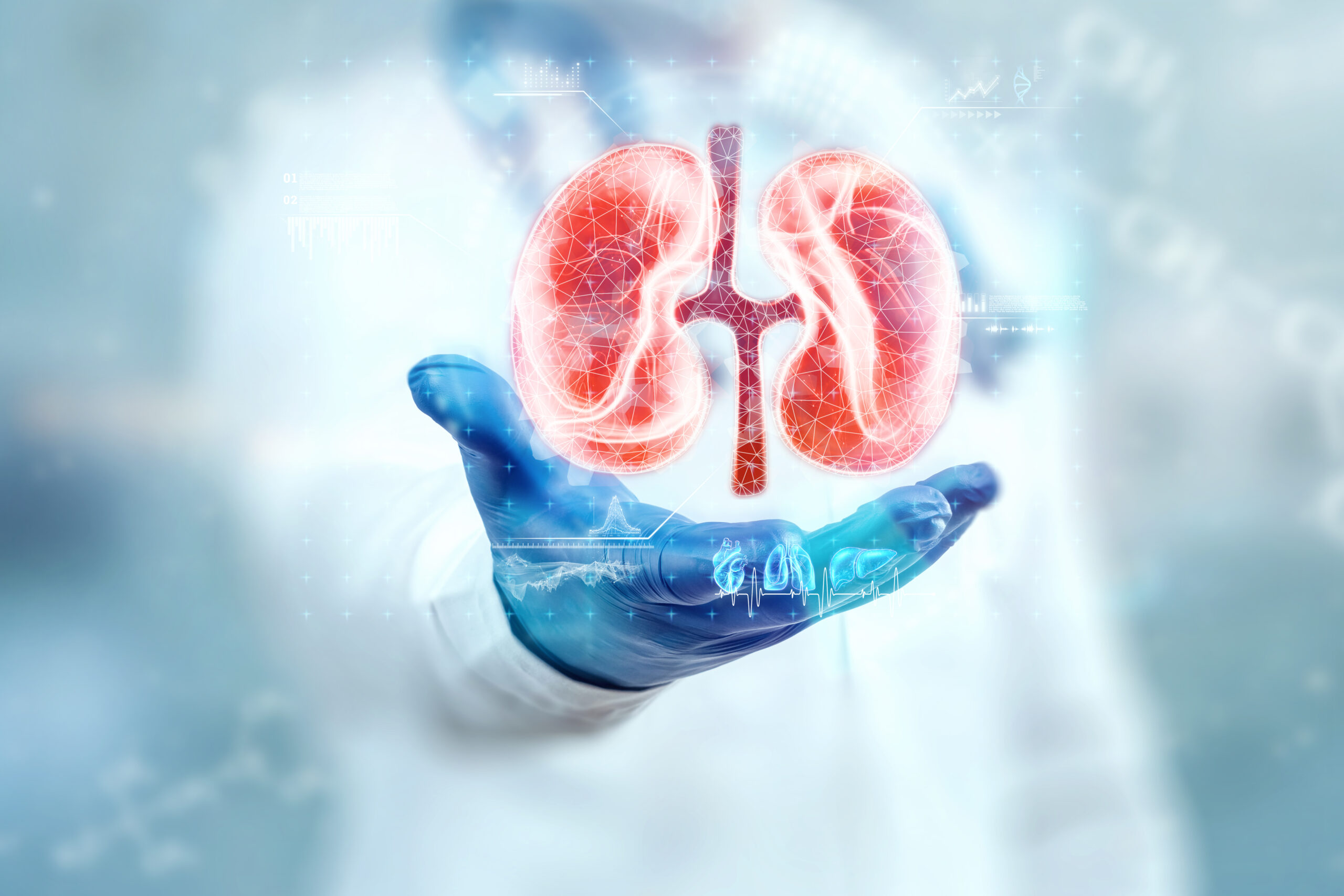The kidneys are two bean-shaped organs located beneath the rib cage, on either side of the spine. The left kidney is slightly superior in position to the right one meaning that it is slightly higher placed. The position of the right kidney makes room for the liver to be wedged above it still beneath the rib cage. The left kidney also weighs more and is slightly bigger than the right one. A kidney is approximately 3cm thick, 12cm long and 6cm wide (about the size of a fist) but these figures are not generic; they are influenced by a number of factors including gender, BMI (Body Mass Index), height, position of the kidneys, number of renal arteries and so on. An individual can live a full and healthy life with only one kidney, whether left or right as there are no indicators that one kidney is, in any way, better than the other in functionality.
Kidney disease facts and statistics
Kidney disease is called a silent disease because it may have no symptoms until it is quite advanced.
There are several types of kidney diseases, two of which are Chronic Kidney Disease (CKD) and Acute Kidney Injury (AKI). While CKD is a continuous loss of the functionality of the kidney over time, AKI is a sudden loss of the functionality of the kidney due to injury and lasts for a period of time after which functionality is restored due to treatment of the injury.
- According to the Center for Disease Control (CDC), about 37 million people are plagued with different kinds of kidney diseases in the United States of America.
- People living with certain health conditions including Diabetes, High blood pressure, HIV, etc. are at higher risk of developing kidney disease as a product of the existing medical conditions.
- On the African continent, Chronic Kidney Disease is regarded as a public health problem attributed to high-risk conditions such as Diabetes and High blood pressure.
- Chronic Kidney Disease has also been linked to the abusive use of regular pain relief medications.
Acute cases of kidney failure in Nigeria are also caused by the use of nephrotoxic (harmful to the kidney) drugs and consumption of herbal concoctions.
- About 90% of those living with kidney diseases are not aware of their condition and 2 out of 5 people suffering from severe kidney disease have no idea that they have it.
- Early detection is very important for the treatment of kidney diseases as only then can it be slowed or stopped.
- Black Africans are four times more likely to get kidney disease.
- Kidney diseases are more common in women than in men yet, for every 2 women who experience end stage kidney disease, 3 men develop kidney failure.
Preventing kidney disease
- Do not engage in self-medication; use medications as directed by your physician.
- Get tested regularly especially if you have an underlying health condition like diabetes.
- If you have diabetes, stay within your target blood sugar range as much as possible. You can engage in regular exercise to help control your sugar levels.
- If you are a smoker, it is advisable to drop the habit.
- Eat more fruits and vegetables and reduce your intake of salt.
- If you are overweight, lose weight.
- Lifestyle changes like eating healthy foods instead of junk or fast foods can also help in achieving a healthier kidney.
Risk factors
The risk factors for kidney disease may be unhealthy habits or underlying health conditions which include but are not limited to:
- High blood pressure
- Diabetes
- Smoking
- Heart disease
- Urinary tract inflammations
- Obesity
- Abnormal kidney structure
- Growing older
- Family history of kidney disease
- Frequent use of medications that are harmful to the kidney
A conscious adjustment of habits and lifestyle choices, as well as regular medical checks and medications for these conditions, have been shown to reduce the risk of developing kidney disease in individuals.
Signs and symptoms
- Loss of appetite
- Nausea and vomiting
- Sleeping problems
- Fatigue and weakness
- Swollen feet and ankles
- Dry and itchy skin
- Build up of fluids around the lungs or heart. When the fluid builds up around the heart, it causes chest pain and when it builds up around the lungs, it causes shortness of breath.
- Underlying health conditions including Diabetes (both Type I and Type II), High blood pressure and Obesity.
Tests
- The tests to be carried out to ascertain the health of the kidney or how far gone kidney damage is, includes:
- Urine tests (Dipstick urine test and Urine albumin-t0-creatinine ratio)
- Blood tests (Glomerular Filtration Rate (GFR), Serum creatinine)
- Blood Urea Nitrogen
- Imaging
- Kidney biopsy
Stages of kidney disease
There are 5 stages of Kidney disease and they are classified based on the Glomerular Filtration Rate, that is how well the Glomeruli filters the blood. This is calculated using an individual’s age, gender and serum creatinine level. Stages 1 to 3 are referred to as Early stage kidney disease while stages 4 and 5 are the Late stages of the disease.
- Stage 1 has normal or high GFR (GFR > 90 ML/min)
- Stage 2 is mild CKD (GFR = 60 – 89 ML/min)
- Stage 3A is Moderate CKD (GFR = 45 – 59 ML/min)
- Stage 3B is Moderate CKD (GFR = 30 – 44 ML/min)
- Stage 4 is severe CKD (GFR = 15 – 29 ML/min)
- Stage 5 is end-stage CKD (GFR < 15 ML/min)
By the time a patient gets to stages 4 and 5, not much can be done except pushing for a transplant.
- Chronic Kidney Disease (CKD)
Chronic Kidney Disease is a progressive condition where the kidneys are unable to function perfectly well. Sometimes, the condition gets worse over time until the kidney loses the ability to function altogether but this is not always the case; some people live quite well with a proper management of the condition but only early detection can facilitate this. Chronic Kidney Disease can be brought on by age but it is sometimes implicated by an underlying health condition like Diabetes.
- End-Stage Renal Disease (kidney failure, ESRD)
End-stage renal disease is also known as established renal failure. It is the last stage in the progression of the Chronic Kidney disease and it means that the kidney is barely or no longer functioning. The progression from CKD to ESRD can take as long as 20 years but is usually dependent on the treatment received and how early the condition was detected. ESRD would mean that the patient is in dire need of a kidney transplant or they would not be able to survive because the waste build up in the body will lead to fatality.
Other kidney diseases and problems
Apart from Chronic Kidney Disease and End Stage Renal Disease, there are a number of other things that can go wrong with the kidney. Some of the commonest are:
- Acute Kidney Injury (AKI) which refers to a sudden and temporary loss of kidney function due to injury. Kidney functions return to normalcy when the injury is treated.
- Kidney stones are deposits of minerals or salts which may form inside the kidney, the tubes that carry urine away from the kidney, or in the urinary bladder. Usually, the stones form when there is an excess of mineral salts or uric acid in the body.
- Kidney infections or Pyelonephritis occurs when an infection spreads upwards from the urethra or the urinary bladder to the kidneys. Sometimes, the infection may spread from other parts of the body to the kidney via the bloodstream or after a kidney surgery.
- A Kidney cyst is a sac-like structure filled with fluid and found in the kidney. There is no known cause for this condition but it is suggested that a cyst can form when damage to the kidney causes fluid to accumulate. The condition has no symptoms until the cyst bursts, bleeds or grows bigger and begins to push against adjacent nerves.
- Polycystic Kidney Disease is a hereditary kidney disease that causes the formation of numerous cysts that damage the Kidneys.
Kidney Cancer is a condition where the cells of the kidney grow abnormally and out of control. Like most cancers, the exact cause of
- kidney cancer is not known but certain factors have been found to increase its risk including Obesity, Smoking, High blood pressure and a family history of kidney cancers.
Kidney diseases in children
Kidney disease is not common in children and research on why they develop the condition at all has not turned up a lot of information. It is also difficult to estimate how many children are affected because they do not show clear symptoms in the early stages of the disease. The development of kidney disease in children has been put down to a number of factors including birth defects, hereditary conditions, infections, trauma, urine blockage or reflux systemic diseases or nephritic syndrome. One may find that these children have stunted growth, lack of appetite, fever and weight loss amongst other indicators. With kidney problems, other complications will arise which may include heart disease, anaemia, growth problems, high blood pressure and so on. As the condition progresses and they start to show symptoms, they may include foamy urine, indicating the presence of too much protein, pink or cola-coloured urine due to the presence of blood, change (increase or decrease) in urine output and bed wetting.




